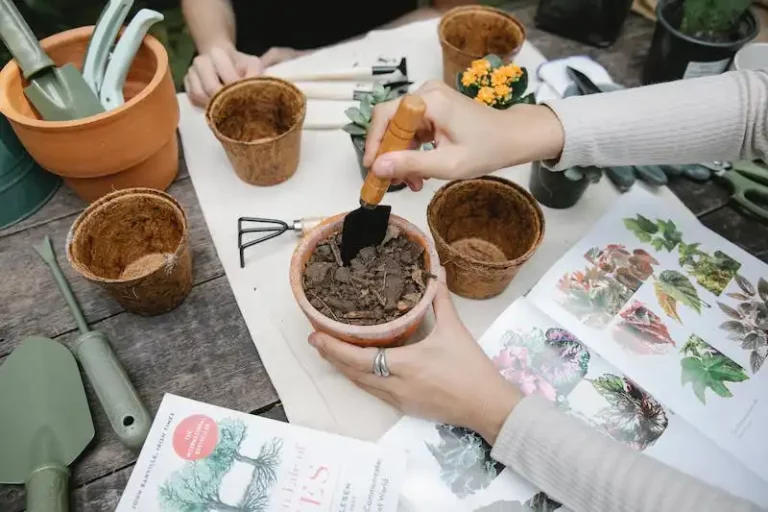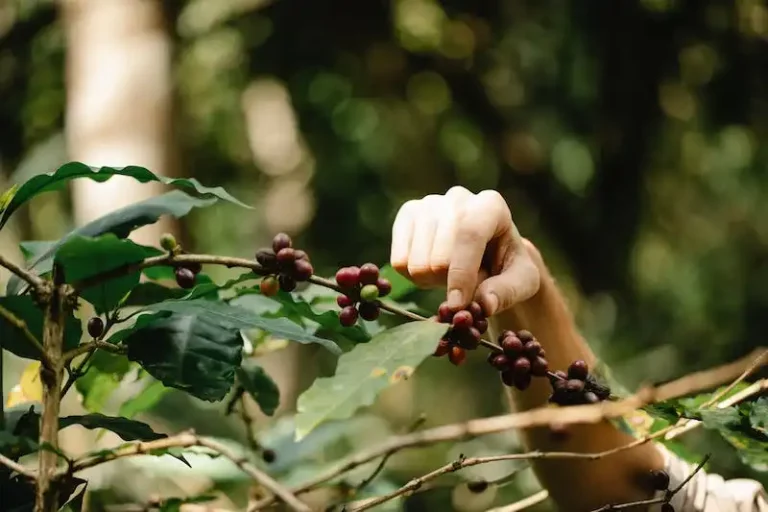The Panda Plant (Kalanchoe Tomentosa) is an amazing succulent that is known for its soft and fuzzy texture. When you touch the leaves of these plants, they feel like velvet. Panda plants are native to Madagascar, where they grow in arid conditions full of sunlight. This succulent gets its name from the white hairs that cover the leaves, giving them a panda-like appearance.
One of the most wonderful things about Panda Plants is their easy care and propagation. They do well in well-drained soil, so make sure to use a mixture of potting soil and perlite. In terms of light conditions, these succulents prefer bright, indirect light. They can tolerate full sun for a short duration but may suffer if exposed to intense sunlight for extended periods.
In terms of watering, Panda Plants are drought-resistant and can survive for a long time without water. It’s best to water them only when the soil has completely dried out. Over-watering can lead to root rot and other problems.
If you want to propagate your Panda Plant, it’s relatively easy to do so. The most common method is through leaf or stem cuttings. Simply take a healthy leaf or stem cutting, let it dry for a few days, and then plant it in well-draining soil. Within a few weeks, you should see new roots and a new plant growing.
Panda Plants are a popular choice for both indoor and outdoor gardening. These succulents are low-maintenance and can thrive in a variety of conditions. They are also great air purifiers and can remove toxins from the air in your home. If you’re considering adding some plants to your indoor space, Panda Plants are a great choice.
In conclusion, the Panda Plant, or Kalanchoe Tomentosa, is a beautiful and easy-to-care-for succulent. With its unique appearance and soft texture, it’s a favorite among plant enthusiasts. Whether you’re a beginner or an experienced gardener, the Panda Plant is a great addition to any collection. So why not give it a try?
FAQs:
Q: How fast do Panda Plants grow?
A: Panda Plants grow relatively slowly, but with proper care, they can thrive and become beautiful and larger over time.
Q: What are the best conditions for growing Panda Plants?
A: Panda Plants prefer well-drained soil, bright but indirect light, and moderate watering.
Q: Can I grow Panda Plants from leaf cuttings?
A: Yes, it’s possible to propagate Panda Plants from leaf cuttings. Simply place the leaf in well-draining soil, and it should develop roots and eventually grow into a new plant.
Kalanchoe Tomentosa Light Panda Plant
The Kalanchoe Tomentosa, also known as the Light Panda Plant, is a beautiful and easy-to-care-for variety of succulent. It is native to Madagascar and is characterized by its fuzzy leaves that resemble the ears of a panda.
Like many succulents, the Light Panda Plant prefers bright, indirect light. It should be kept in a well-drained potting mix and watered only when the top inch of soil feels dry. This plant is drought-resistant and can tolerate periods of dryness, so it’s best to err on the side of under-watering rather than over-watering.
Propagation of the Light Panda Plant can be done through leaf and stem cuttings. Before taking cuttings, ensure that the plant is healthy and free from any signs of disease or damage. Cuttings should be placed in a mix of perlite and well-drained soil and kept in a warm and bright location. Within a few weeks, roots will develop, and new plants will begin to grow.
The Light Panda Plant can tolerate a wide range of temperatures, but it thrives best in temperatures between 60 and 75 degrees Fahrenheit (15 to 24 degrees Celsius). It is sensitive to frost and should be brought indoors or protected during the colder months.
As its name suggests, the Light Panda Plant has a striking resemblance to a panda with its fuzzy leaves and dark brown spots. It is a popular choice for home gardeners who want to add an interesting and unique plant to their collection. With proper care and attention, the Light Panda Plant can live for many years and bring a touch of nature and beauty to any space.
In order to ensure the best growth and health of your Light Panda Plant, here are some tips to keep in mind:
- Provide bright, indirect light
- Use a well-drained potting mix
- Water sparingly, allowing the top inch of soil to dry out between waterings
- Avoid over-watering to prevent root rot
- Keep the plant in a warm location, ideally between 60 and 75 degrees Fahrenheit
- Protect the plant from frost and cold temperatures
- Propagate through leaf and stem cuttings
- Monitor for pests or diseases and take appropriate action if needed
With its unique characteristics and easy care requirements, the Kalanchoe Tomentosa Light Panda Plant is an amazing addition to any succulent collection. Whether you are a seasoned plant enthusiast or new to gardening, the Light Panda Plant is sure to captivate with its panda-like appearance and ability to thrive in a variety of conditions.
Panda Plant
The Panda Plant, also known by its scientific name Kalanchoe tomentosa, is a variety of succulent plant that is popular among gardening enthusiasts. It is native to Madagascar and is well-loved for its unique appearance and easy care.
One of the most remarkable characteristics of the Panda Plant is its fuzzy and soft leaves that resemble the fur of a panda, hence the name. The leaves are typically green with brownish or reddish markings, giving the plant a striking and adorable look.
When it comes to growing conditions, the Panda Plant is relatively easy to care for. It thrives in well-drained soil and prefers bright, indirect light. It can tolerate some direct sunlight, but too much can scorch its leaves. In order to ensure the plant’s healthy growth, it should be watered moderately, allowing the soil to dry out slightly between waterings. Overwatering can cause root rot and other issues, so it is important to strike a balance.
Like most succulents, the Panda Plant is drought-resistant and can survive in dry conditions. This makes it a perfect choice for those who have limited time for plant care or live in areas with inconsistent watering capabilities. It also makes a great addition to offices, as it can tolerate artificial light and low humidity.
If you are interested in getting a Panda Plant, you can find it at your local nursery or order one online. It is a popular plant that is readily available and reasonably priced. Before buying, consider the size and condition of the plant, ensuring that it is healthy and has a well-established root system.
Propagation of Panda Plants can be done through stem cuttings. Simply cut a healthy stem and let it dry for a few days before planting it in a well-draining soil mix. Adding perlite or another succulent soil amendment can improve drainage.
In conclusion, the Panda Plant is an amazing succulent that is loved for its unique appearance and ease of care. Whether you are a beginner or an experienced gardener, you will likely find success in growing this delightful plant. So, why not add a Panda Plant to your collection and enjoy its beautiful leaves for many years to come!
Frequently Asked Questions (FAQs):
| Q: | Where should I place my Panda Plant for optimal growth? |
| A: | The Panda Plant should be placed in a location that receives bright, indirect light. It can tolerate some direct sunlight, but too much can be harmful. |
| Q: | How often should I water my Panda Plant? |
| A: | Panda Plants should be watered when the soil becomes dry. It is important to avoid overwatering as it can cause issues like root rot. |
| Q: | What are some other varieties of Kalanchoe tomentosa? |
| A: | Some other varieties of Kalanchoe tomentosa include ‘Chocolate Soldier’ and ‘Cinnamon’. They have similar care needs and characteristics as the standard Panda Plant. |
| Q: | Are Panda Plants suitable for beginners? |
| A: | Yes, Panda Plants are considered to be relatively easy to care for and are a great choice for beginners. |
ORIGIN
The Panda Plant, scientifically known as Kalanchoe tomentosa, is a beautiful succulent native to Madagascar. It is grown within many regions around the world due to its attractive appearance and easy care requirements.
The name “Panda Plant” comes from the plant’s thick, fuzzy leaves that resemble the fur of a panda. The leaves are covered in a layer of fine hairs, which helps the plant retain moisture in dry conditions.
In its natural habitat, the Panda Plant grows in well-drained soil and can withstand long periods of drought. However, when grown indoors, it should be kept in a fast-draining soil mix, such as a mix of cactus soil and perlite. Excess water should be carefully avoided, as it can lead to root rot. The plant thrives in bright, indirect light, but it can also tolerate lower light conditions.
The Panda Plant is easy to propagate. It can be propagated through leaf cuttings, which should be allowed to callous over before being placed in well-drained soil. The cuttings will root and eventually grow into new plants.
When it comes to care, the Panda Plant doesn’t have many common problems. However, it should be protected from extreme temperature changes and cold drafts, as this can damage the plant. It is also important to avoid overwatering, as the plant is drought-resistant and can easily rot if the roots are kept wet for too long.
In conclusion, the Panda Plant is a unique and eye-catching succulent that is easy to care for. With the right conditions and proper care, it will thrive and bring a touch of beauty to any home or garden.
CARE
When it comes to caring for a Panda Plant (Kalanchoe tomentosa), there are a few key considerations to keep in mind. These succulents are not too difficult to care for and can be a great addition to any indoor garden.
Panda Plants are native to Madagascar and are part of the Kalanchoe family, which includes many types of beautiful succulents. They are known for their fuzzy, green leaves that have a similar appearance to the ears of a panda hence the name Panda Plant. One of the most common varieties is the Kalanchoe tomentosa ‘Chocolate Soldier’ which has dark brown spots on its leaves.
In order to grow a healthy Panda Plant, it is important to provide it with the right conditions. These plants thrive in bright, indirect light, so placing them near a window is ideal. They can tolerate some direct sunlight, but too much can lead to leaf burn.
Panda Plants are succulents, so they should be watered sparingly. It is best to allow the soil to dry out completely between waterings. Overwatering can lead to root rot and other gardening problems, so it is important to be careful. When watering, make sure to pour the water directly onto the soil rather than on the leaves to avoid damage.
Propagation of Panda Plants is relatively easy. They can be grown from leaf cuttings or stem cuttings. To propagate from leaf cuttings, simply remove a healthy leaf from the plant and let it dry for a few days. Then, place the leaf in a well-draining soil mix or a mixture of soil and perlite. Within a few weeks, roots should begin to form, and a new plant will begin to grow.
Panda Plants can grow quite large if given the right conditions, so it is important to provide them with enough space. They are slow growers, but with the right care, they can reach heights of up to 2 feet. In order to keep them looking their best, it is a good idea to periodically remove any damaged or dead leaves.
If you are unsure about any aspect of Panda Plant care, there are many resources available online. You can find care guides, FAQs, and tips from experienced growers to ensure that your Panda Plant thrives.



